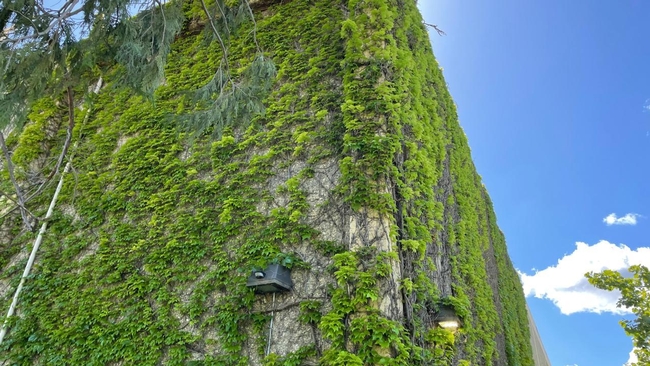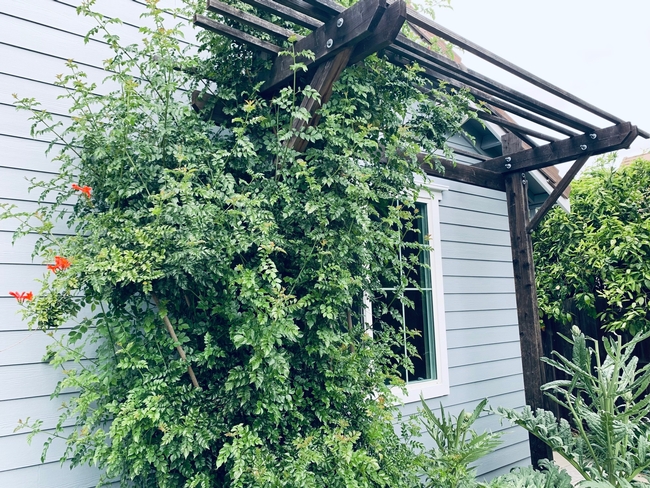Posts Tagged: adaptation
Residents’ water security concerns could spur climate adaptations
Study: Climate impacts widespread across California, fueling worries over water supply
As water system managers across California devise strategies to help secure their water supply, they often face a major obstacle to implementing those measures: a lack of interest or will to act among community members.
“One of the things that the literature has found is that even if water system managers and local decisionmakers are really worried about climate change and water security, a lot of the adaptation strategies that they have in their toolbox actually require support from residents,” said Kristin Dobbin, a UC Cooperative Extension specialist focused on water justice planning and policy.
Because popular support is essential for realizing many water-related adaptations – from changing the rate structure to approving bonds for new infrastructure – Dobbin and her colleagues recently published a paper looking deeper at residents' experiences of, and concern about, climate impacts to household water supply.
Through a drinking water-focused portion of a long-term panel survey administered by California State University, Sacramento, scholars in the Household Water Insecurity Experiences research network had the opportunity to query Californians on how they are experiencing the climate crisis at their taps. Specifically, the researchers sought to analyze respondents' perceptions of future climate risks to water security.
“As a group that studies drinking water access in California, we're often looking at the system level and community level,” said Dobbin, based at the UC Berkeley Department of Environmental Science, Policy and Management. “So it was exciting to dive into the household level and understand what's happening at a more individual level.”
Climate impacts seen ‘up and down the state'
The statewide survey, conducted in spring 2021, elicited 704 responses from the panelists, representing every census region in the state and nearly every county. More than one-third (34%) of respondents said that their water supply had been affected by an extreme weather event in the past five years. Given the timing of the survey, drought was unsurprisingly the most frequently mentioned impact. Importantly, these climate impacts were felt across California.
“There is an inclination to assume that drought and other impacts are a geographically bounded issue, but what we really see is that is not the case,” Dobbin said. “These impacts are happening up and down the state, all the way to the Oregon border.”
Overall, 85% of respondents reported that they were concerned about the long-term reliability of their water supply. Crucially, the study also indicated that residents were making the connection between climate impacts and risks to their future water security.
“The more impacts they reported, the more concerned they were about future supply and reliability,” said study co-author Amanda Fencl, a senior climate scientist with the Union of Concerned Scientists.
Droughts and heat waves, in particular, seem to increase residents' concerns over water supply the most. Dobbin suggests that framing the need for water-security adaptation strategies around those specific weather events could be particularly useful in marshaling community support.
Knowing the level of concern within the community – and understanding the best way to convey the urgency of climate adaptation measures – could be a boon for local managers seeking to gain public backing for more expensive water projects. Such projects might include self-sufficiency measures that reduce reliance on imported water from other parts of the state.
“That could bolster some water managers to have more confidence in using climate change and extreme events as a way to motivate ratepayers to get on board with these bigger investment decisions,” Fencl said.
Study highlights avenues for more research
While flooding barely registered as a climate impact in the 2021 survey results, Dobbin said that the responses would likely be very different today, after atmospheric rivers inundated the state this past winter. Floodwaters can damage water treatment plants – and storms can knock out power to private wells and larger water system treatment and distribution facilities.
In fact, from the 2021 survey, power outages due to utilities' wildfire prevention policies were the climate impact most frequently mentioned in the “other” category, highlighting for researchers the need to consider and plan for the interconnectedness of water and power systems.
“People forget about the interplay between a reliable electric grid and the ability to run water in your house and the ability for water systems to pump and treat water,” Fencl explained. “When we think about disaster response and disaster preparedness, we need to be a bit more holistic.”
The researchers also pointed to significant differences in experiences of climate impacts across gender and racial demographics, with Latino, Asian American Pacific Islander and LGBTQ+ respondents reporting higher rates of impacts. Given the relatively small sample sizes, however, Fencl said there needs to be larger – and more inclusive – surveys to get a clearer picture of those disproportionate impacts.
Even still, Dobbin added that their study serves as a reminder for scholars, water managers and policymakers to re-center community members, in all their diversity, as key players in the push for more effective and sustainable climate adaptation strategies.
“One of the takeaways from the paper is that we can't forget about the role of the public in this conversation – and we can't bypass the public,” Dobbin said. “The bottom line is that most of the adaptations that we have available to us require some level of residential involvement.”
In addition to Dobbin and Fencl, authors of the study, published in the journal Climatic Change, include Gregory Pierce, UCLA Luskin Center for Innovation; Melissa Beresford, San Jose State University; Silvia Gonzalez, UCLA Latino Policy and Politics Institute; and Wendy Jepson, Texas A&M University.
Can vines speed urban cooling?
Study explores cooling benefits of fast-growing vines as trees take their time
Perhaps trees aren't the only green solution when it comes to cooling urban spaces and reducing energy costs. Honeysuckle, Virginia creeper, pink trumpet and other vines could be a fast-growing substitute in climate-smart cities of the future.
Researchers from UC Davis are leading a nearly $880,000 federal grant to study how vines may provide cooling and shade in Western states in less time than it takes a tree to grow tall.
“Vines can quickly shade buildings and reduce energy consumption while trees slowly grow to maturity,” said Alessandro Ossola, an assistant professor of plant sciences who is a principal investigator for the project. “We believe vines can be an effective and cheap measure to help cities accelerating climate change adaptation.”
The grant from the U.S. Department of Agriculture's Agricultural Marketing Service will fund work to plant and monitor at least 10 types of vines on trellises in five locations in different climate zones over three years. California Department of Food and Agriculture is administering the grant.
Using less water
Water conservation will be vital as populations rise, climate extremes become more prevalent and the demand for agricultural and drinking water increases. The goal of this research is to identify vines that can help save energy by providing cooling and reduce the need for irrigated water.
“In addition to rapid growth rates, vines can be easily integrated with structures to maximize potential cooling effects,” said Loren Oki, a Cooperative Extension specialist with Department of Plant Sciences, who is the project lead. “But we need to understand the relationships between low water-use plants and their ability to reduce thermal loads on buildings.”
The vines will be planted, supported by a trellis and watered regularly during the first growing season to establish deep roots and healthy shoots. Over the next two years, the vines will experience low, moderate and high water allocations.
The vines will be rated on aesthetics, foliage quality, floral quantity, pest and disease resistance, appearance and other factors. Thermal images of trellis coverage and other environmental measurements will also be taken to assess shading and cooling potential, according to grant documents.
Many vines can be grown along cables and wire nets that are actually detached from walls to avoid direct contact and still provide shade, Ossola said.
“We want to understand which vine characteristics relate to fast growth, reduced water use and increased aesthetic appeal,” he added.
Outreach and education
The findings will enable recommendations to be developed for regions, planners, the landscape industry and the public. It could lead to plants being designated as “water-wise,” “low-water use,” “energy-saving” or “cooling.”
Extensive engagement and outreach will also publicize the information.
“Climate change is a great opportunity for the horticultural industry to innovate and promote climate-ready plant productions,” Ossola said.
USDA funding supports research across state lines to find innovative solutions to regional and national problems, USDA Under Secretary for Marketing and Regulatory Programs Jenny Lester Moffitt said in a news release announcing this and other grants.
“This year's funded projects will address a range of those challenges, from energy and water saving in vine plants, finding cost-effective solutions for heat tolerance and drought, to addressing food safety risks for produce,” Moffitt said.
Scientists from the University of Arizona, University of Washington, Utah State University and the South Coast Research and Extension Center at UC Agricultural and Natural Resources are contributing to the research and will be overseeing vine sites in their states.
This article is reprinted from the UC Davis College of Agricultural and Environmental (CA&ES) website, where it is titled "Could Vines Be the Answers to Speeding Urban Cooling, Water Reduction in the West?"



